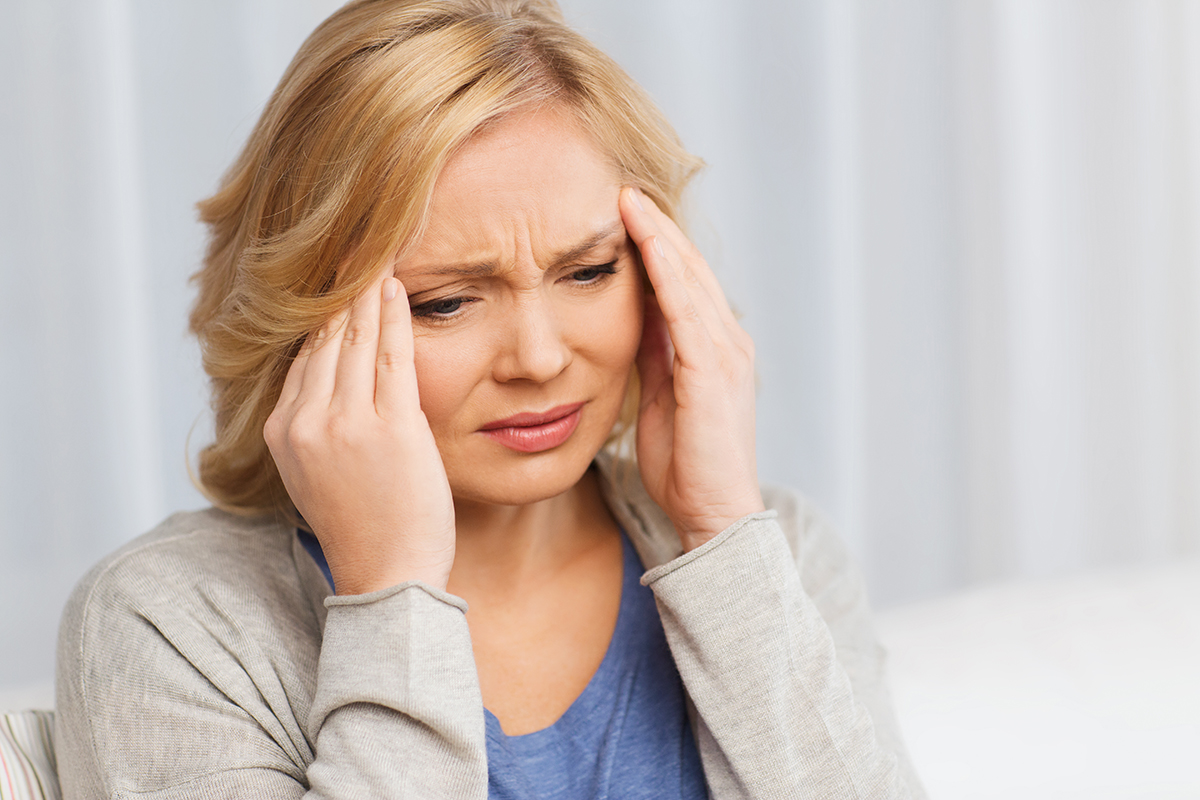Migraine is much more than a simple headache - it is a complex neurological condition that affects a huge number of people worldwide. It is characterised by recurrent, often intense headaches that can last from a few hours to even a few days. Migraines are often described as a throbbing, throbbing pain, usually localised to one side of the head, although it can also involve both sides.
What distinguishes migraine from a regular headache is its additional symptoms. Migraine sufferers often experience hypersensitivity to light (photophobia) and sound (phonophobia), as well as nausea and vomiting. In some cases, migraine can be accompanied by an aura - a collection of neurological symptoms such as visual disturbances, tingling in the hands or face and even difficulty speaking, which usually occur before the headache begins.
Migraine can be triggered by various factors that vary from person to person. These can include hormonal changes (for example, related to the menstrual cycle in women), certain types of food, stress, changes in diurnal rhythm or changes in weather. The response to these factors is individual, which can make managing migraine a challenge.
Causes and risk factors
Migraine is a complex condition whose exact causes are not fully understood. However, there are a number of factors that may contribute to its development and trigger attacks. Understanding these factors can help to better manage migraine and reduce the frequency of headaches.
One of the key aspects of migraine is genetic factors. Studies have shown that migraine tends to run in families, suggesting that a predisposition to develop it may be inherited. People whose relatives suffer from migraine are more likely to develop it.
Environmental factors also play a significant role. Among the most common migraine triggers are stress, fatigue, changes in weather, as well as certain foods and drinks. For example, alcohol (especially red wine), caffeinated products, as well as certain preservatives and food additives, such as monosodium glutamate, can provoke migraine attacks.
Hormones also have a significant impact, particularly in women. Many women experience migraine associated with the menstrual cycle, and hormonal changes associated with menstruation, pregnancy, menopause or use of hormonal contraception can affect the frequency and intensity of migraine headaches.
Lifestyle is another important factor. Unhealthy eating habits, lack of regular sleep, lack of physical activity or overactivity can all contribute to migraines. Changing these habits can help reduce the frequency and severity of migraines.
Not just a headache
Migraine is manifested by a range of symptoms that go far beyond the headache itself. Understanding the variety and complexity of these symptoms is key to proper diagnosis and treatment.
The typical, most familiar symptom of migraine is, of course, the headache, which is often described as throbbing or throbbing, usually concentrated on one side of the head. However, the intensity and location of the pain can vary from person to person and from attack to attack.
A migraine aura is a phenomenon that precedes or accompanies the headache in some cases of migraine. The aura may manifest as visual problems such as flashes of light, spots in the field of vision or temporary loss of vision. Other symptoms of aura may include tingling in the hands or face, difficulty speaking and, even less commonly, muscle weakness.
Photophobia, or hypersensitivity to light, and phonophobia, or hypersensitivity to sound, are also common migraine companions. These symptoms can make it very difficult to function normally, especially in the work environment or in public places.
Daily life with migraine
Migraine is not just a headache - its impact on the daily lives of sufferers can be huge and multidimensional. From difficulties at work to challenges in social life, migraine can significantly affect various aspects of functioning, including mental health.
At work, migraine often leads to a loss of productivity, especially during attacks. The headache, hypersensitivity to light and sound and other symptoms can make it difficult to focus, often requiring a break from work or even sick leave. For many migraine sufferers, the stress of having to manage symptoms in a work environment can be an added challenge.
In social life, migraine can lead to isolation. Migraine attacks may require avoiding social activities, meeting friends or family. Migraine sufferers often have to give up attending social events, which can lead to feelings of alienation and loneliness.
Furthermore, migraine also has an impact on mental health. Chronic pain and other symptoms can contribute to the development of anxiety and depression. Uncertainty about the timing and intensity of the next attack can trigger anxiety, while the life constraints associated with migraine can lead to lower mood and wellbeing
Treatment
When developing treatment strategies for migraine, it is important to remember that effective therapy often requires a combination of different approaches, tailored to the needs and preferences of each migraine sufferer. Treatment is not only an attempt to alleviate pain during an attack, but also a strategy to reduce their frequency and intensity and improve overall quality of life.
The cornerstone of migraine therapy is appropriately selected medication. Depending on the characteristics and severity of the migraine, doctors may prescribe painkillers, specialised migraine medications and sometimes prophylactic medications to reduce the frequency of attacks. The choice of appropriate pharmacological treatment is always an individual issue and should be discussed carefully with the treating physician.
In addition to medical treatment, lifestyle changes are an important part of migraine management. Adjusting diet, regular physical activity, managing stress and maintaining a regular sleep pattern can all have a positive impact on migraine control. These natural treatments, while they may seem simple, often prove to be extremely effective in relieving migraine symptoms.
The role of alternative therapies, such as acupuncture or cognitive behavioural therapy, which many people find to be a valuable complement to traditional treatments, should also not be overlooked. These methods can help not only to manage pain, but also to better manage stress and other migraine triggers.

